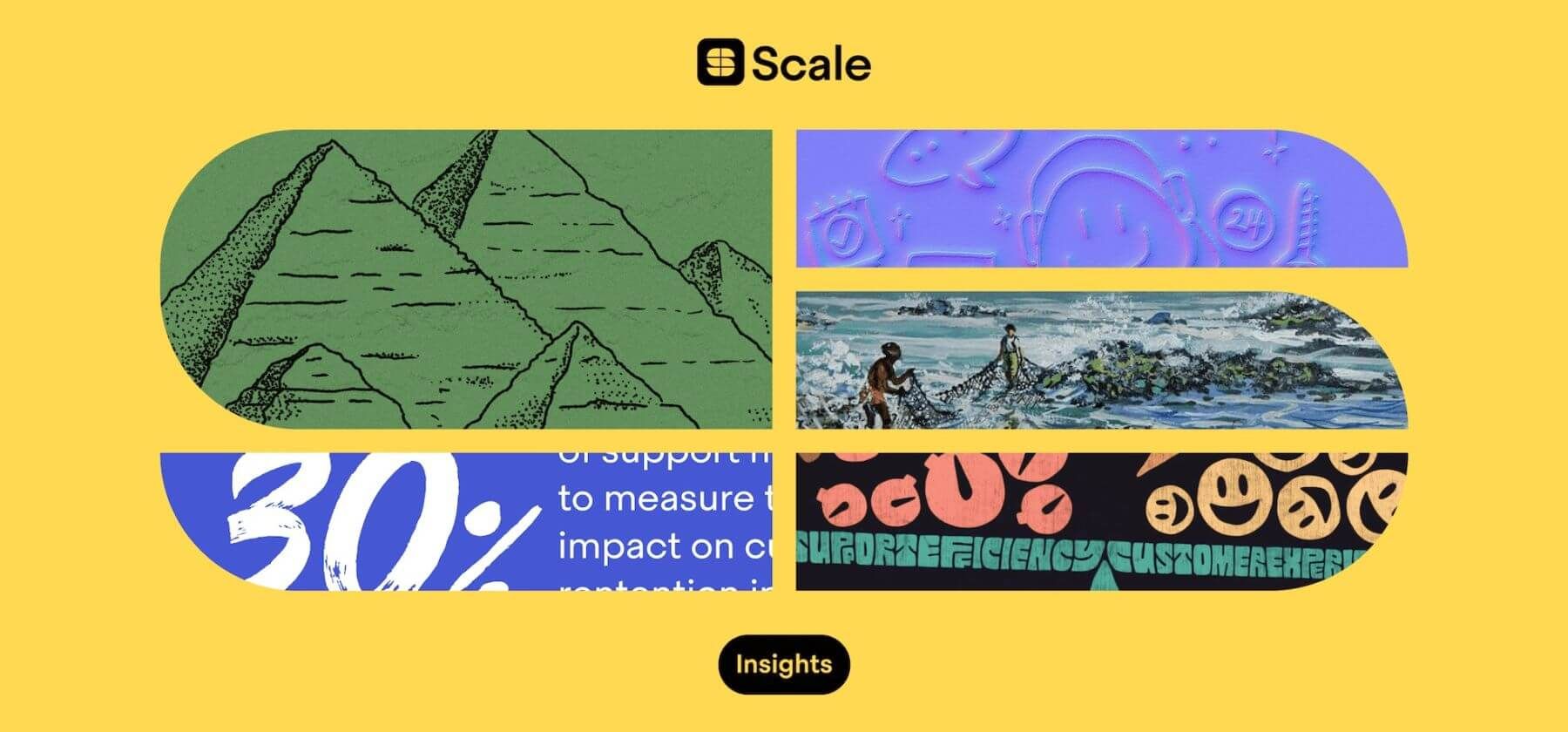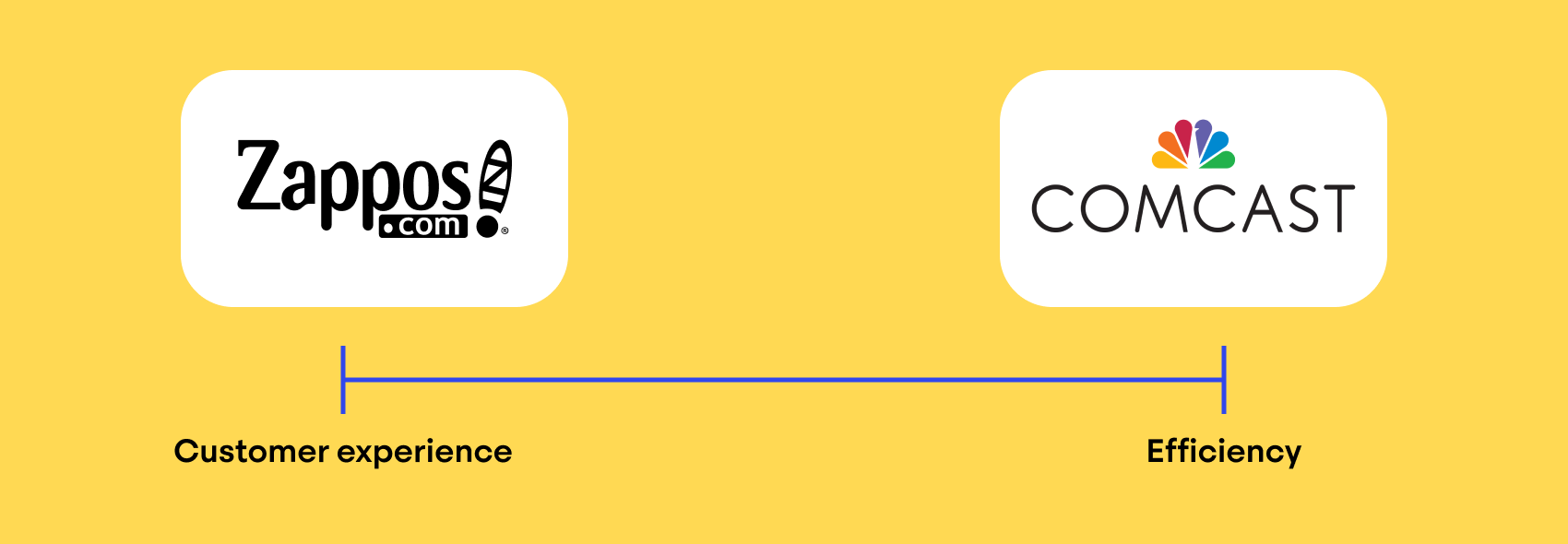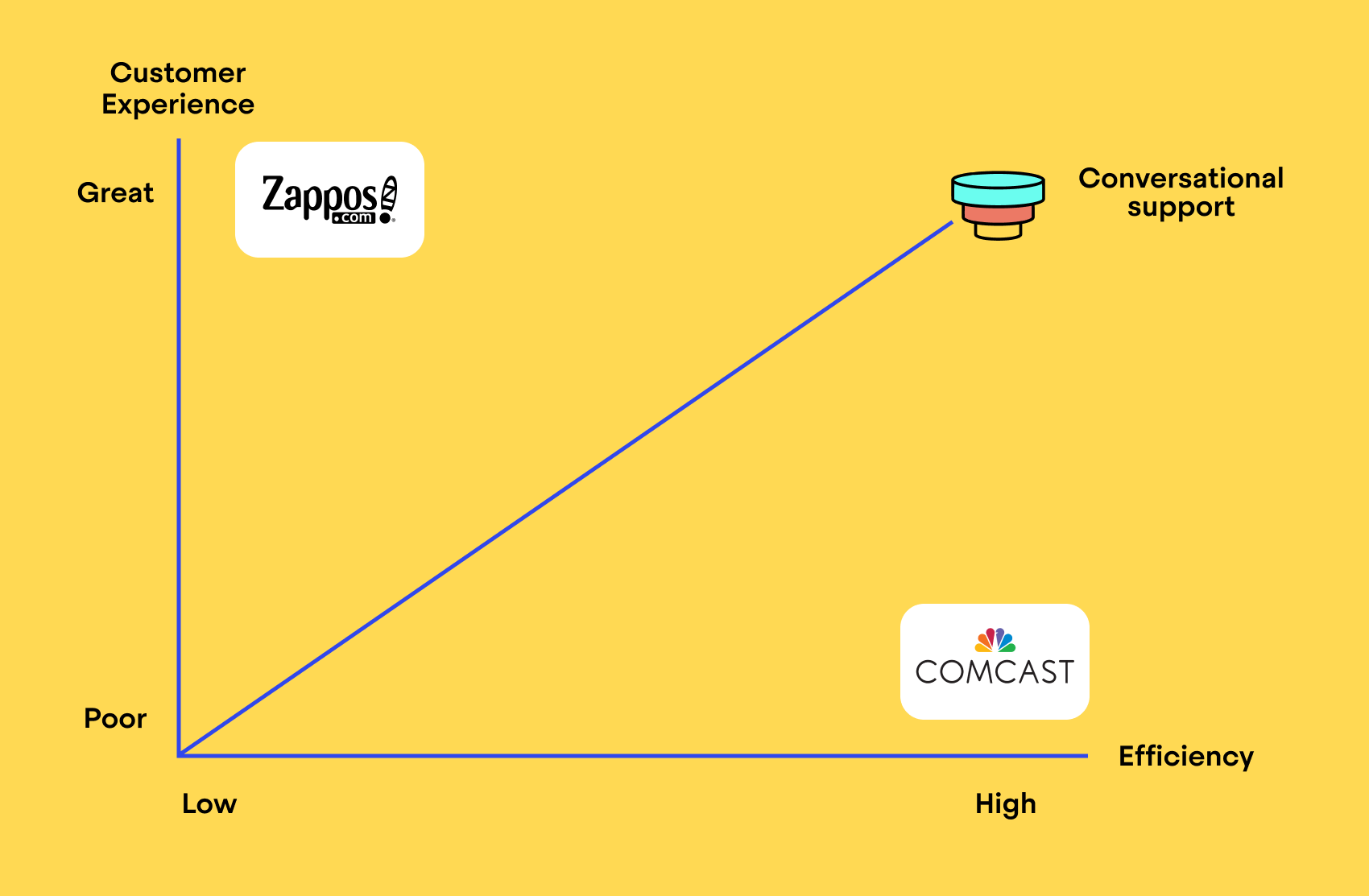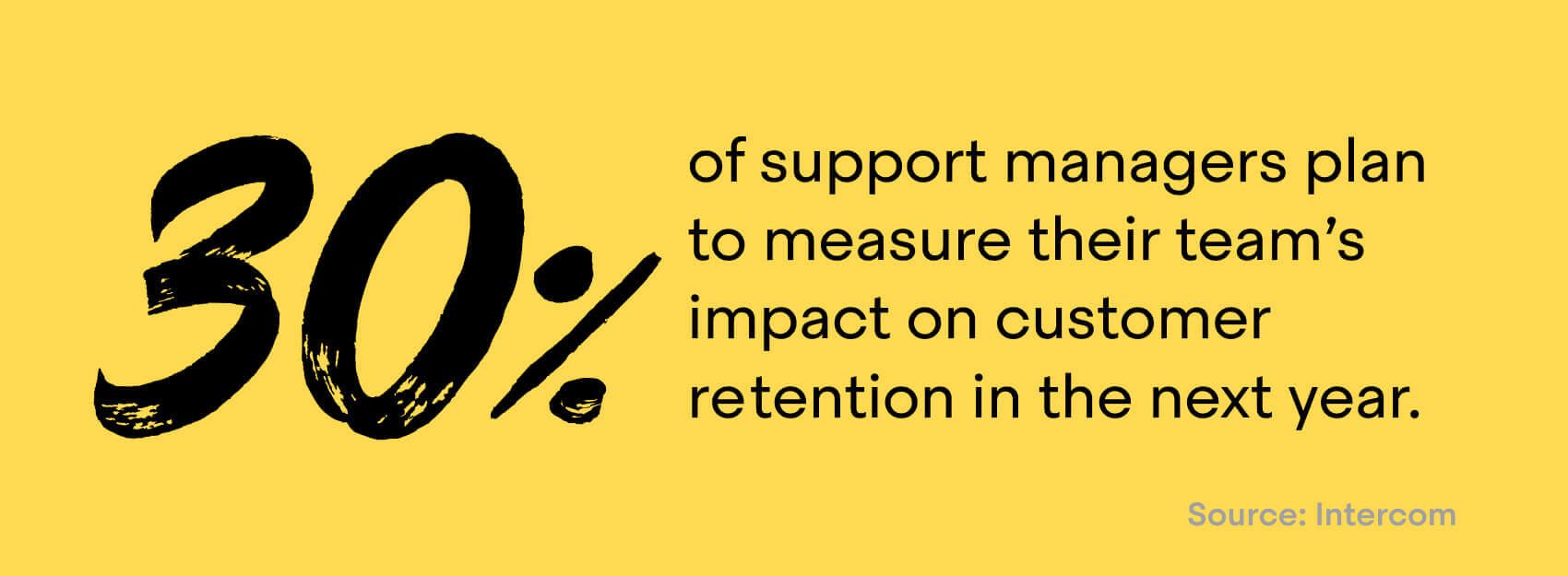
Customer experience versus efficiency – why support leaders shouldn’t have to choose
Main illustration: Jason Yim
As a business grows, most support leaders will be challenged to answer this seemingly trick question: can you provide a best-in-class customer experience…but at a lower cost?
Not long ago, answering this question meant veering in one of two directions. If you said “no,” you had to find a way to justify having really happy customers at an equally high cost. Case in point: online retailer Zappos whose commitment to delighting customers has meant making their support team available for quite literally anything.
On the other hand, if you said “yes,” you had to be willing to sacrifice best-in-class support for maybe-not-the-worst-ever support. You ended up looking a lot more like telecoms providers Comcast and Virgin Media whose support has been remarkable for all the wrong reasons.
“The reality is, there are very few businesses who can afford to operate at either extreme”
But this approach to managing support shortchanges either your company and, more likely than not, your team – or your customers. The reality is, there are very few businesses who can afford to operate at either extreme.
At Intercom, we’ve worked hard to find a way to do both – to provide a great customer experience and operate with the efficiency that our company and team needs. More than that, by balancing both, we’ve been able to achieve what often feels elusive: positive revenue impact.
Are you Zappos – or are you Comcast?
At some point, many support teams find themselves leaning toward one extreme or the other. In a company’s lifetime, you might find yourself spending time on both ends.
For businesses that can still remember their plucky startup days, the odds are your support team is more like Zappos’ than Comcast’s. When customers are far and few between, it makes all the sense in the world to connect with them personally and one-on-one at a nearly real-time pace.
“The problem is, as companies grow, we tend to approach efficiency and customer experience as two diametrically opposed choices”
In Intercom’s early days, our co-founder Des sent 100 emails everyday, each one personalized, to prospective customers. For many years, everyone in the company was expected to support customers in the Intercom Inbox and, still to this day, we offer customer support sessions where teammates from around the company can shadow our support specialists.
The problem is, as companies grow, we tend to approach efficiency and customer experience as two diametrically opposed choices. Either you’re all in on delighting customers, or you’re doing everything you can to minimize your costs and maximize your profit.

It’s a problem we know well. One of the challenges we’ve faced as a support team is scaling our high bar for customer satisfaction without scaling our headcount alongside our customer count. But what we want to gain in efficiency we aren’t willing to trade for a poor customer experience.
Striking a balance with conversational support
Here’s the good news: that diametrically opposed choice between customer experience and efficiency is now one of the past.
“Conversational support enables us to strike the balance between what’s good for our company and what’s good for our customers”
At Intercom, we’ve invested in a modern approach to customer support – what we call conversational support – that enables us to strike the balance between what’s good for our company and what’s good for our customers. It’s the antidote to our two biggest headaches as support leaders: having a really expensive (or really burnt out) support team and driving away customers with a jungle gym of no-reply email addresses and painful phone trees.
By doubling down on messenger-based support, we’re able to achieve high levels of efficiency and an enjoyable, personalized customer experience. Instead of being either Zappos or Comcast (or awkwardly stuck in the middle), we’re now balancing the best of both.

So, how does conversational support actually help us achieve this balance? We use the conversational support funnel to combine proactive, self-serve, and human support capabilities. This approach allows us to get ahead of known problems before they arise, automatically answer repetitive questions, and focus on the complex issues that require our team’s expertise.
When customers do need to connect with our team, we use chatbots to set upfront expectations for when we’ll be in touch. We also have our chatbots suggest relevant resources like help articles that customers can use to start troubleshooting while they wait. Most customers don’t mind waiting for high-quality support; they just don’t want their problem sent into the void.
Whether you’re more like Zappos or Comcast (we won’t tell 🤫), the conversational support funnel can be an incredibly powerful framework. Here’s how we think about it:
If you’ve erred on delight…
Now you’re looking to increase your team’s efficiency. The funnel allows you to move from one support rep and one conversation to many conversations at scale with automated and proactive support. On our team, that’s made possible through tools like targeted messages, chatbots, and help articles. And when our reps do connect with customers, they can easily manage and switch between multiple, asynchronous conversations at once.
If you’ve led with efficiency…
Now you’re looking to improve customer satisfaction. The funnel enables you to trade in outdated processes for a new way of providing human support efficiently – not by deflecting customers’ questions but by resolving as many as possible upfront and automatically. When it comes to one-to-one customer interactions, our team uses advanced workflows to make our human support both quick and personal.
More than a balance: it’s a strategic investment
We’ve long viewed our support team as a revenue driver. But where many teams get stuck, and ours has been no exception, is in the day-to-day work of establishing a healthy baseline for your customer experience and efficiency.
Think about it this way: if driving growth is the penultimate destination on your support team’s journey, you’ll be hard-pressed to get there in a car with no engine or wheels.
Achieving a balance then serves a greater objective: making space for support to become a positive force on revenue. It’s something many of us are actively working toward. In fact, our survey of nearly 600 support managers revealed that 30% plan to measure their team’s impact on customer retention in the coming year and 25% plan to do the same for renewals.

At Intercom, we’ve been able to move beyond simply answering customers’ immediate questions to contributing to their long-term success. For example, in response to the coronavirus outbreak, our support team has been working directly with impacted customers to provide short-term relief, so we can retain them in the years to come.
“We’ve moved beyond answering customers’ immediate questions to contributing to their long-term success”
With conversational support, we’re also able to quickly identify and efficiently pass expansion opportunities to our sales team. It’s like an SDR motion for our current customers: in their conversations, our support specialists look for areas where customers can get more value from our product and then tee up those customers to meet with our sales team.
These positive, enduring support interactions where our team is adding value, not just resolving one-off problems, mean customers don’t just stay with Intercom but grow with us too.
Support leaders shouldn’t have to choose between what’s good for their company and what’s good for their customers. With conversational support, we’ve been able to deliver both an experience that our customers appreciate and the efficiency that our business needs. The result: the kind of strong customer relationships at scale that fuels long-term growth.
If you want to do the same, get the Conversational Support Funnel Starter Kit and see how your support team can strike the balance between customer experience and efficiency.








